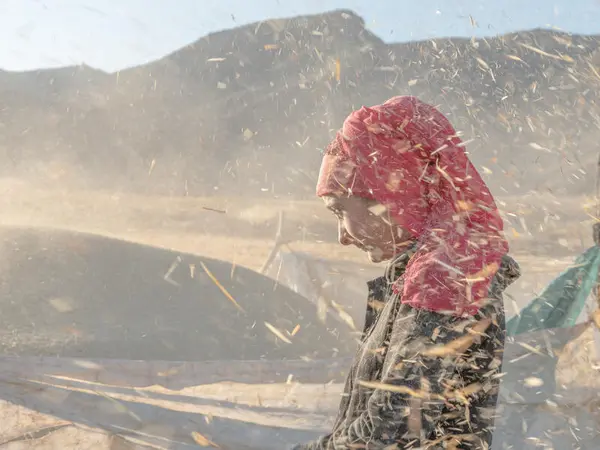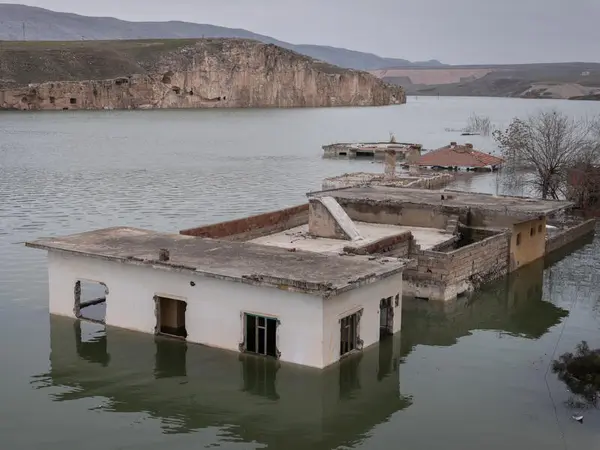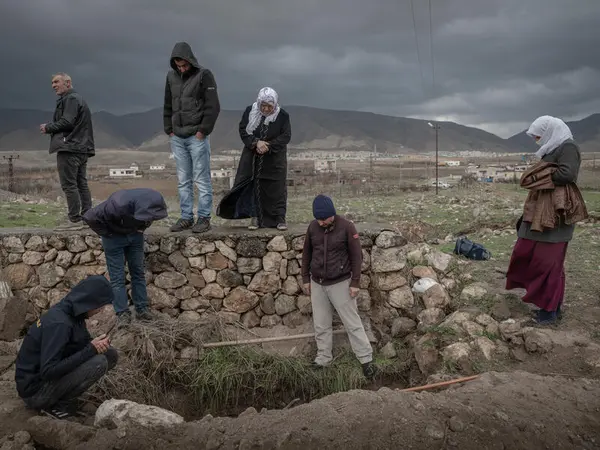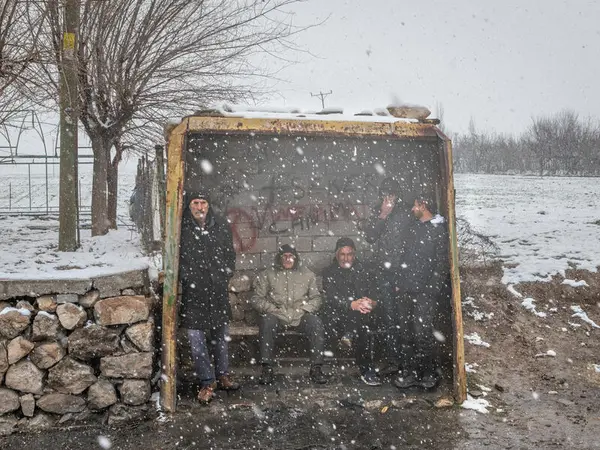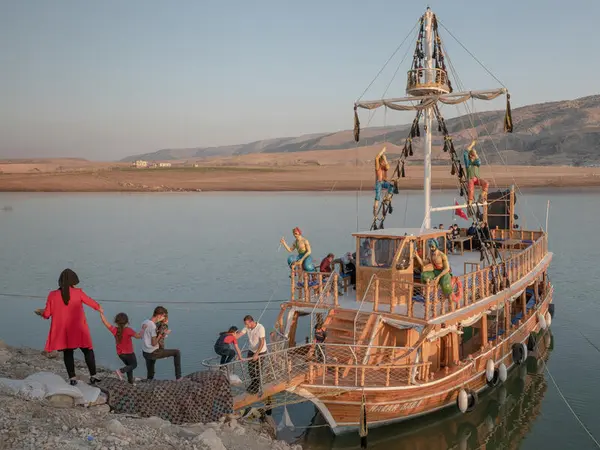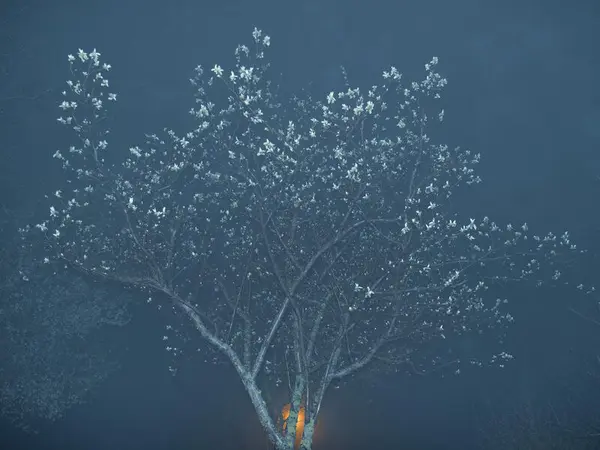- 1/1
© Mustafa Bilge Satkın, Drowned History, 2020. Ayşe is the youngest member of a family of eight children, and she has to work at harvest time like all family members. In the past, these people were able to do irrigated farming on their land near the Tigris river. Now the farmers are forbidden to use the water in the dam. Drought caused a decrease in the amount of grain in the region.
Da demningen ble bygget, ble befolkningen i regionen nødt til å forlate hjemmene, landområdene, minnene og kulturen sin. Den mest sorgtunge delen av denne prosessen er at de også må åpne gravene til sine døde kjære, og bære levningene deres med seg til det nye angitte bostedet.
«Dette prosjektet har til hensikt å understreke de sosiale, miljømessige og økonomiske endringene forårsaket av demningen. Menneskeheten og naturen står overfor en klimakrise. Ilisu Dam har vært på agendaen en god stund. Vi må imidlertid akseptere at dette ikke er et regionalt spørsmål, men et felles problem for hele menneskeheten.»
- 1/9
© Mustafa Bilge Satkın, Drowned History, 2020. Houses that were once filled with children, now inundating with water. Owner of the houses will not be able to see them anymore in a week, since that water rises 1.5 meters a day. - 2/9
© Mustafa Bilge Satkın, Drowned History, 2020. A wedding on the street in the city suburbs. People migrating from the village to the city are facing some cultural changes. Tossing fake dollars at celebrations in the city suburbs is now one of the new wedding normals. - 3/9
© Mustafa Bilge Satkın, Drowned History, 2020. A newlywed man moving to his new house before the ancient city is submerged. Forced to leave his inherited house, the young man now has to pay rent for the new settlement. - 4/9
© Mustafa Bilge Satkın, Drowned History, 2020. The exhumation of a man who died 50 years ago. The granddaughters and their sons are carefully watching as their grandfather HALIL’s grave is being opened. HALIL died 50 years ago. Two granddaughters’ sons only know HALIL through their mothers’ stories. The remains are moved as they have a spiritual value and so people do not forget their past. Although this process deepens people's agony, they do this to be able to show their ancestors' graves to future generations and to be able to visit them on special days. - 5/9
© Mustafa Bilge Satkın, Drowned History, 2020. Village residents watch the snowfall at the old bus stop. The bus will no longer pass from this stop since the roads of this village have been flooded. - 6/9
© Mustafa Bilge Satkın, Drowned History, 2020. There are two types of boats on the river, one used for transportation, the other for touristic trips. Boat trips are not unusual for Turkey as it is considered as peninsula, however, it is unprecedented for the villagers of Hasankeyf. This certainly is a radical change from the traditional way of living. - 7/9
© Mustafa Bilge Satkın, Drowned History, 2020. Koctepe, four km. away from the main dam (body of the dam), is the very first inundated village Remains of ceramics from the archaeological excavations indicate a history going back to 3000-2700 BC. - 8/9
© Mustafa Bilge Satkın, Drowned History, 2020. A young Diyarbakir with a Kalashnikov tattoo and stab scars is sunbathing on the dam pond in the Tigris valley. - 9/9
© Mustafa Bilge Satkın, Drowned History, 2020. As the waters continue to rise, some fruit trees that are not completely submerged greet spring with blooms. Nature is struggling to survive.
Her kan du lese Mustafa Bilge Satkıns prosjektbeskrivelse
This project tells the story of people forced to abandon their ancestral city Hasankeyf. Aligned with the state's water policies, the Ilisu Dam was constructed even though, inevitably, historical and cultural heritage would be buried, its precious riverine habitat would be flooded, and people would be de-territorialized. With the Dam being built, the region's people had to leave their homes, lands, memories, and cultural history altogether behind. The most agonizing part of this process is that they also have to undug their lost loved ones' graves and carry their remains with them.
The annihilation of the residential area in the Tigris Valley not only led to environmental issues but destroyed cultural memories. This venerable land carries the social identity of its citizens as well as cultures that once reigned in the region. Thereby, historical monuments here are deeply connected to the residents. Inhabitants believe the removal of their heritage has reduced them merely to a touristic attraction.
This project intends to underscore the social, environmental, and economic changes caused by the dam. Humankind and nature are faced with a climate crisis. Simultaneously, regional migration has become a major threat due to “human interference”. The consequences of these human interventions on nature will not be without consequences. Ilisu Dam has been on the agenda for quite some time, however, we must accept that this is not a regional issue but a common problem of mankind.
